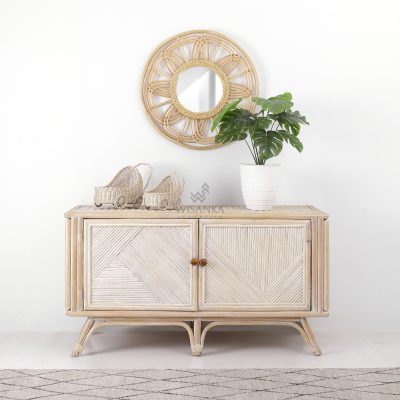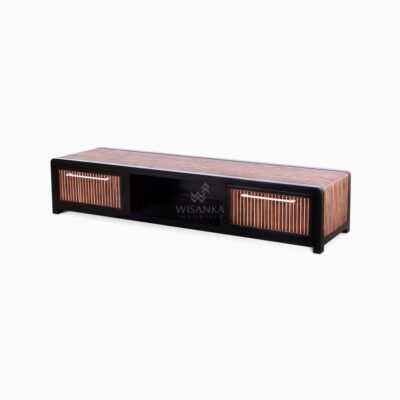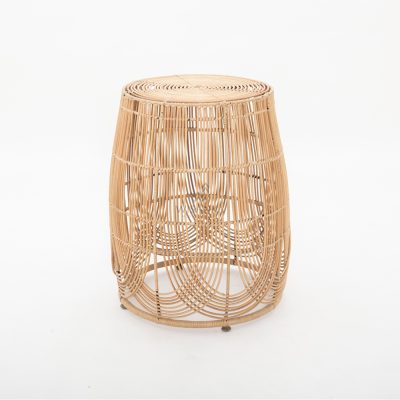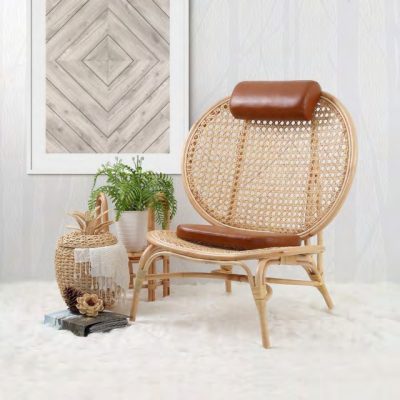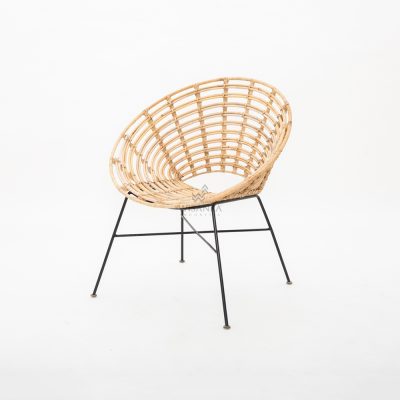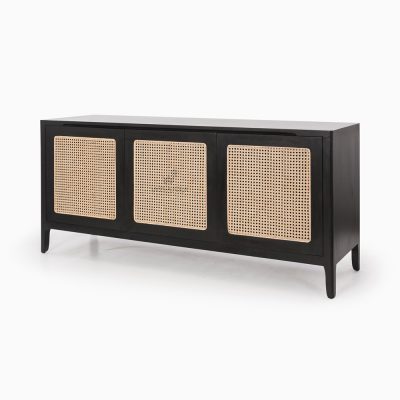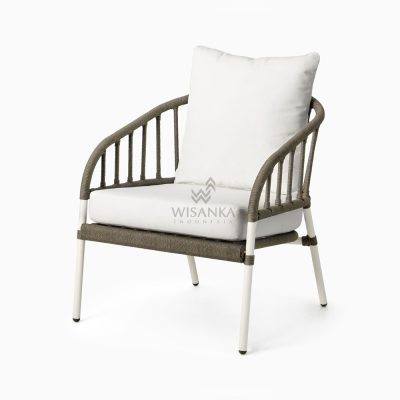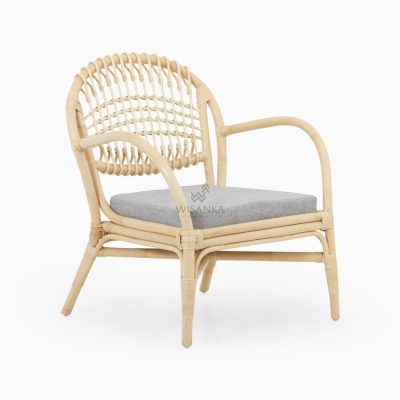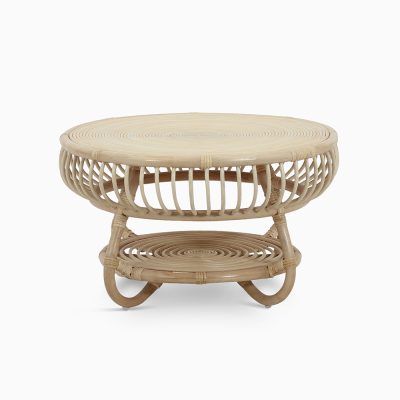Rattans is a versatile and durable material derived from a specific type of climbing palm found predominantly in tropical regions. It has become a staple in the furniture industry due to its strength, flexibility, and aesthetic appeal. This article delves into the various aspects of rattan, including its types, forms, sizes, leading producers, and its application in the furniture industry, concluding with some recommended rattan furniture pieces.
What is Rattan?
Rattan is a naturally growing vine-like species that belongs to the palm family (Arecaceae). Unlike bamboo, which is hollow inside, rattan has a solid core, making it a highly durable and flexible material. It thrives in tropical regions, particularly in Southeast Asia, where countries such as Indonesia, Malaysia, and the Philippines dominate global rattan production. Rattan is extensively harvested for various applications, primarily in the furniture industry.
Rattan Growth and Global Production
According to data from the Food and Agriculture Organization (FAO), Indonesia supplies nearly 80% of the world’s rattan, making it the largest exporter globally. The remaining 20% comes from countries like Malaysia, Thailand, and the Philippines. Rattan plants grow rapidly, reaching maturity within 5 to 7 years, which makes them a sustainable and renewable resource compared to traditional hardwoods that take decades to mature.
Characteristics of Rattan
- Durability: Rattan is known for its strength and resilience, capable of withstanding various environmental conditions.
- Flexibility: Unlike hardwood, rattan can be bent and woven into intricate designs, making it a preferred choice for furniture production.
- Lightweight: Despite its sturdiness, rattan furniture is relatively lightweight and easy to transport.
- Sustainability: Since rattan grows quickly and regenerates efficiently, it is considered an eco-friendly alternative to wood.
What is Rattan Furniture?
Rattan furniture refers to household and commercial furniture crafted from natural rattan materials. This type of furniture is highly sought after for both indoor and outdoor settings due to its aesthetic appeal, durability, and eco-friendliness. Rattan furniture can be categorized into natural rattan furniture and synthetic rattan furniture.
Natural vs. Synthetic Rattan Furniture
| Feature | Natural Rattan Furniture | Synthetic Rattan Furniture |
|---|---|---|
| Material | Harvested from rattan vines | Made from polyethylene (PE) or synthetic fibers |
| Durability | Susceptible to moisture and pests if untreated | Weather-resistant and UV-protected |
| Maintenance | Requires regular care and varnishing | Low-maintenance and easy to clean |
| Usage | Ideal for indoor use | Suitable for outdoor use |
Global Market and Demand for Rattan Furniture
The rattan furniture market has been experiencing substantial growth due to increasing consumer awareness of sustainable and eco-friendly furniture options. According to Grand View Research, the global rattan furniture market was valued at approximately USD 2.7 billion in 2022, with a projected CAGR (Compound Annual Growth Rate) of 5.8% from 2023 to 2030.
Additionally, the growing demand for boho-style furniture and natural materials in home decor has significantly contributed to the increasing popularity of rattan furniture. The United States and Europe remain the top importers of rattan furniture, with notable demand from the hospitality and interior design industries.
Advantages of Rattan Furniture
- Eco-Friendly: Rattan is a renewable material, making it a sustainable furniture option.
- Aesthetic Appeal: The natural texture and organic appearance of rattan furniture complement various interior styles, from modern to rustic.
- Versatility: Rattan furniture is suitable for multiple environments, including living rooms, patios, and even office spaces.
- Cost-Effective: Compared to solid wood furniture, rattan furniture is often more affordable while maintaining high durability.
Rattan and rattan furniture have established themselves as essential components in the sustainable furniture industry. With Indonesia leading the global rattan supply, this material continues to be a preferred choice for furniture manufacturers worldwide.
The rising awareness of environmental sustainability and the demand for natural aesthetic designs have further propelled the growth of rattan furniture in both residential and commercial markets. Investing in rattan furniture is not only a stylish choice but also a step towards supporting eco-friendly living.
Deep Dive into the World of Rattan: From Forest to Furniture
As the world increasingly turns toward sustainable solutions, rattan has emerged not only as a symbol of tropical craftsmanship but also as a beacon of eco-conscious innovation. While the previous section explored the foundational aspects of rattan, this segment offers a more in-depth exploration of its botanical nature, industrial processing, supply chain challenges, modern innovations, and environmental significance in today’s global furniture market.
The Botanical Complexity of Rattan
Rattan is not a single species but encompasses over 600 species of climbing palms under the subfamily Calamoideae, with the majority found in the rainforests of Southeast Asia. It thrives in humid lowland tropical forests, where its long, slender stems—sometimes reaching over 100 meters—twist around trees in search of sunlight.
Unlike trees that grow vertically with a single trunk, rattan uses other vegetation for support, a trait that makes it more efficient in biomass production per hectare. Species such as Calamus, Daemonorops, and Korthalsia are among the most commercially valuable. These species differ in texture, diameter, and growth behavior, which directly impacts the final quality and application of the rattan in furniture making.
Moreover, the harvesting of rattan must be timed carefully. Overharvesting can damage the regeneration cycle, whereas underutilization results in a missed economic opportunity for local communities.
Harvesting and Processing: From Jungle to Workshop
The journey of rattan from the jungle to the showroom involves several stages, each crucial in maintaining product integrity and sustainability:
- Harvesting: Rattan stems are cut at their base using manual tools to avoid damaging the root system, allowing natural regeneration.
- Transport and Cleaning: The canes are bundled and transported to processing facilities where they are stripped of their outer skin (bark) and cleaned.
- Drying and Curing: This is the most vital stage. Traditionally sun-dried, modern facilities now use kiln drying to ensure uniformity and kill any pests.
- Smoking/Bleaching: Sulfur is often used to bleach rattan, giving it a consistent golden tone. However, newer eco-friendly techniques are replacing chemical treatments with steam or UV bleaching.
During this phase, defects like nodes or fungal stains are inspected. Select canes are bent using steam or hot oil and shaped into frames or intricate woven patterns for chairs, loungers, bassinets, and decorative panels.
Innovation in Rattan Use and Design
Traditionally associated with rustic or coastal styles, rattan has undergone a renaissance in recent years. Modern furniture designers are blending Scandinavian minimalism, Japanese wabi-sabi, and mid-century modernism with rattan components.
Some emerging design trends include:
- Modular rattan furniture: Designed for compact urban living, offering detachable and multi-functional pieces.
- Rattan and metal hybrids: Fusing rattan with stainless steel or powder-coated iron frames for a contemporary edge.
- Colored rattan finishes: Innovations in water-based dye technology allow the creation of pastel or bold-toned rattan pieces without compromising the cane’s strength.
Additionally, luxury brands have begun to incorporate rattan in high-end hospitality projects, recognizing its balance of tradition, sustainability, and modern appeal.
Synthetic Rattan: Evolution and Controversy
While natural rattan remains celebrated for its organic feel and aesthetics, synthetic rattan (often referred to as resin wicker or PE rattan) has carved a niche for itself in outdoor furniture markets.
Originally created to address the weathering limitations of natural rattan, synthetic rattan:
- Is UV-resistant
- Withstands rain and frost
- Requires minimal maintenance
However, its growing popularity raises environmental concerns, especially related to microplastic shedding and end-of-life recyclability. Unlike its natural counterpart, synthetic rattan often lacks a closed-loop recycling process, leading to waste accumulation if not properly managed.
Fortunately, manufacturers are beginning to develop bio-based or biodegradable alternatives, including:
- PLA-based (Polylactic Acid) wicker, derived from corn or sugarcane
- Recyclable PE variants certified under GreenGuard or Cradle to Cradle programs
The Role of Indonesia in the Global Rattan Supply Chain
Indonesia remains the world’s undisputed leader in rattan production and export. It controls more than 85% of the global supply, thanks to its vast rainforests, skilled artisans, and robust government-backed certification programs.
Key Indonesian production regions include:
- Kalimantan (Borneo): Known for Calamus caesius, used in traditional weaving
- Sulawesi: Produces large-diameter rattan canes ideal for structural components
- Sumatra and Java: Centers for both raw processing and value-added export (e.g., finished furniture)
To preserve this advantage, the Indonesian government implements SVLK (Timber Legality Verification System) and promotes sustainable harvesting. Indonesia is also part of FLEGT-VPA, a voluntary partnership agreement with the EU that promotes legal timber trade, which includes rattan under certain classifications.
Sustainability, Certification & Challenges
The sustainability of rattan is not only due to its fast regrowth rate but also because its harvesting supports forest conservation. Since rattan needs forest trees to climb, it incentivizes the preservation of standing forest cover—a sharp contrast to logging which removes trees entirely.
However, several sustainability challenges persist:
- Illegal harvesting in unregulated areas
- Poor processing waste management, leading to water and soil pollution
- Worker welfare concerns in smaller, unregulated facilities
To counter these issues, certification bodies such as:
- FSC (Forest Stewardship Council)
- Fair Trade Certification
- Rainforest Alliance
…are increasingly involved in auditing and accrediting rattan operations. Buyers from Europe and North America now prefer rattan furniture labeled with these certifications to ensure ethical sourcing.
Rattan in Architecture and Commercial Spaces
Beyond furniture, rattan is making its way into interior architecture and hospitality design. Hotels, resorts, and retail spaces are integrating rattan in:
- Ceiling panels
- Wall claddings
- Acoustic baffles
- Decorative light fixtures
The porous texture of rattan offers natural sound absorption and temperature regulation, while the visual patterns of cane weaving bring a sense of warmth and cultural heritage into modern spaces.
Moreover, biophilic design, which promotes the use of natural materials and patterns in interior environments, has accelerated rattan’s adoption in commercial spaces focused on wellness and sustainability.
The Future of Rattan: Trends and Forecast
Looking ahead, the global rattan market is expected to grow steadily due to:
- Increased eco-conscious consumer behavior
- Government regulations encouraging the use of renewable materials
- Interior design trends favoring handmade and natural textures
- E-commerce expansion, making rattan furniture accessible to global buyers
Forecasts from industry analysts suggest the rattan furniture segment will exceed USD 4.5 billion by 2030, driven largely by demand in urban housing, eco-resorts, and millennial homeowners.
Additionally, the growth of AI-assisted furniture design and CNC-based weaving machinery promises to bring more consistency and scalability to rattan production without sacrificing artisanal quality.
Rattan as a Material of the Future
Rattan is far more than a rustic décor element—it’s a powerful symbol of regenerative design, economic opportunity, and cultural resilience. Its lightweight form belies its global economic and ecological weight.
For brands and consumers alike, investing in rattan furniture means:
- Supporting forest-based economies
- Encouraging sustainable consumer practices
- Embracing a timeless material that blends tradition with innovation
Whether you’re a wholesaler, designer, or eco-conscious buyer, rattan continues to offer endless possibilities—as long as we continue to harvest, process, and consume it responsibly.
Rattan Furniture for Sale
-
 Conca Sideboard – Natural Rattan Sideboard
Conca Sideboard – Natural Rattan Sideboard -
 Twisto Low TV Cabinet – Rattan Cupboard TV Stand
Twisto Low TV Cabinet – Rattan Cupboard TV Stand -
 Sommer Set High Side Table – Rattan Cane Side Table
Sommer Set High Side Table – Rattan Cane Side Table -
 Victor Chair – Rattan Occasional Chair
Victor Chair – Rattan Occasional Chair -
 Bonaventura Dining Chair – Cane Dining Chair
Bonaventura Dining Chair – Cane Dining Chair -
 Sagara Sideboard – Rattan Sideboard Cabinets
Sagara Sideboard – Rattan Sideboard Cabinets -
 Carina Chair – Rattan Outdoor Chair
Carina Chair – Rattan Outdoor Chair -
 Dawai Arm Chair with Cushion – Rattan ArmChair
Dawai Arm Chair with Cushion – Rattan ArmChair -
 Bondia Coffee Table – Rattan Round Coffee Table
Bondia Coffee Table – Rattan Round Coffee Table

